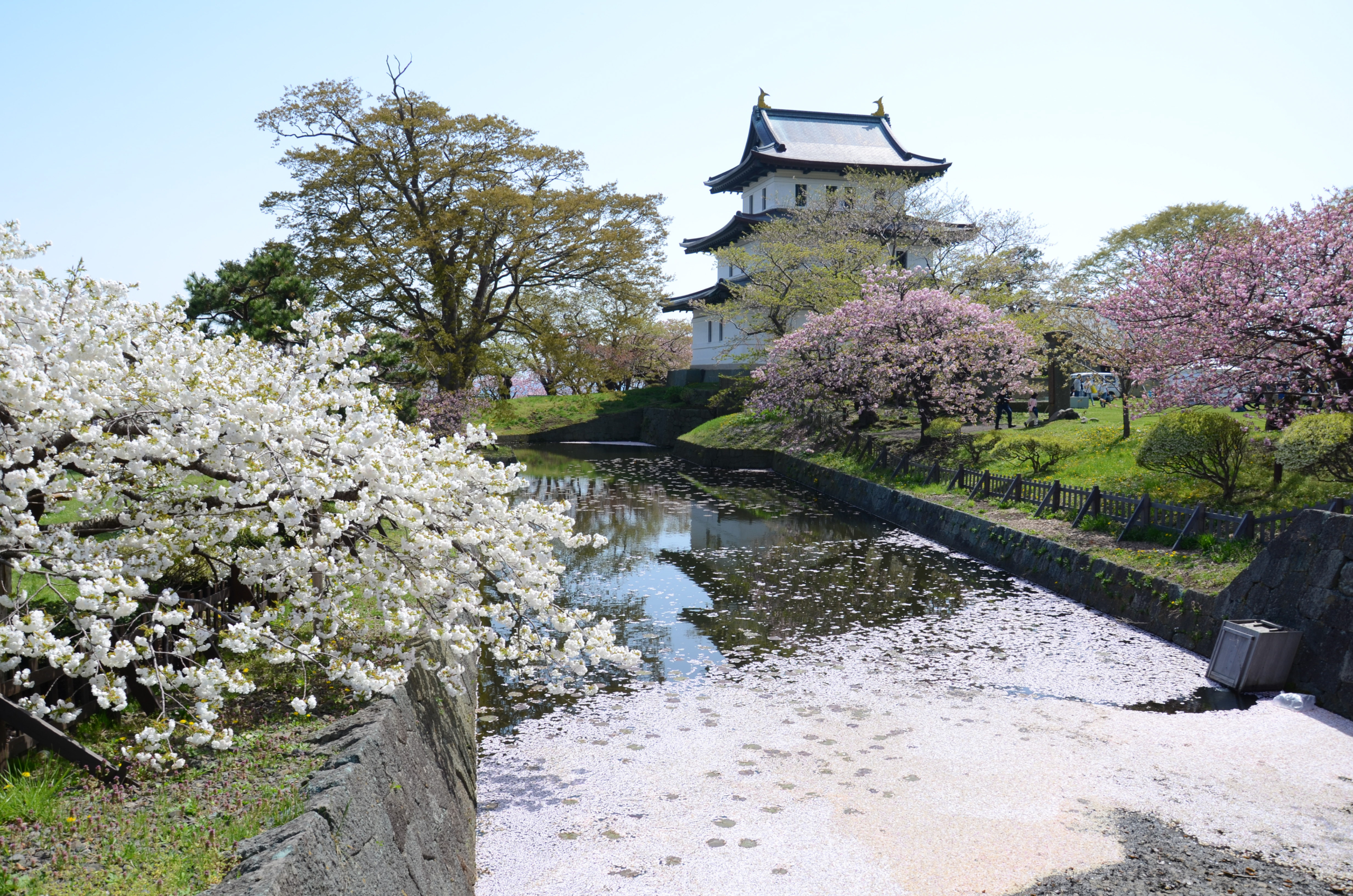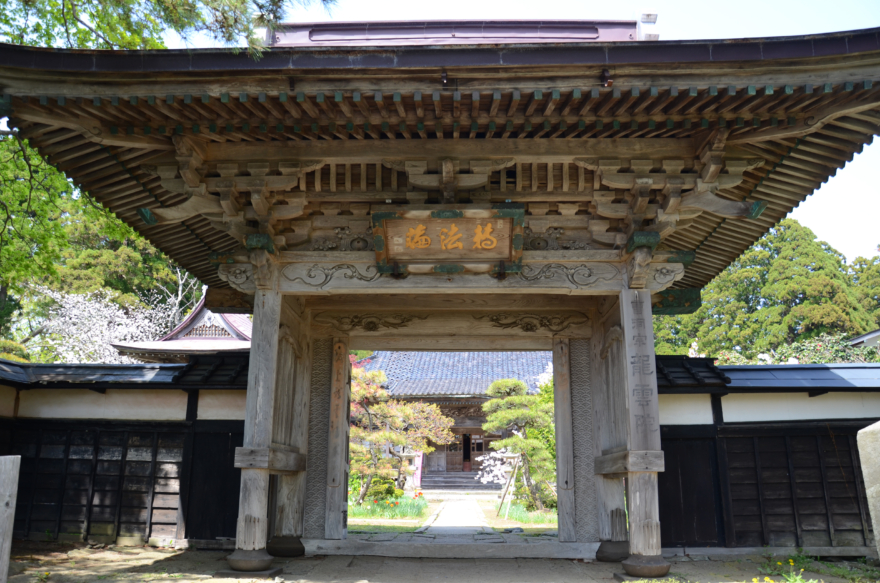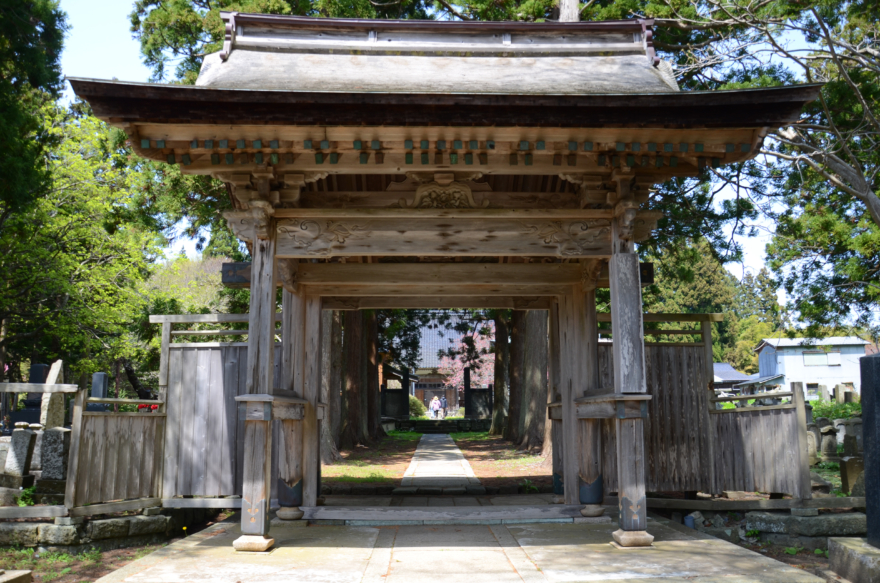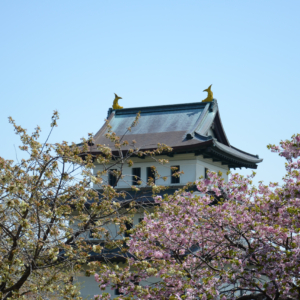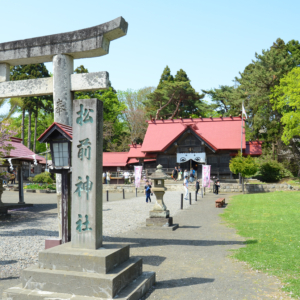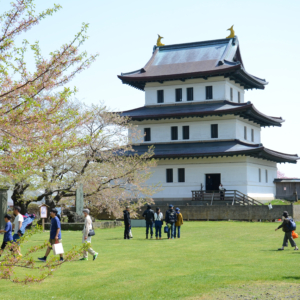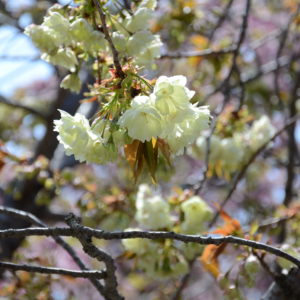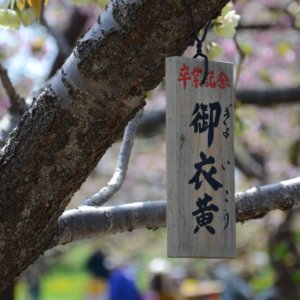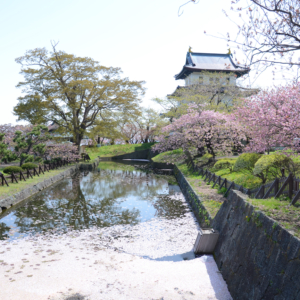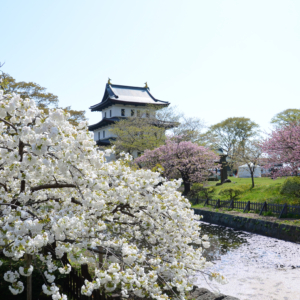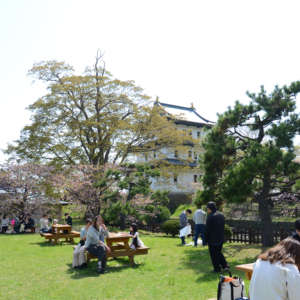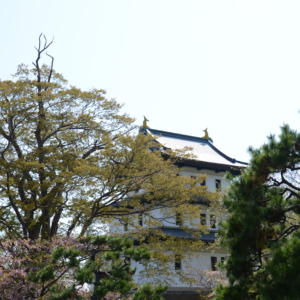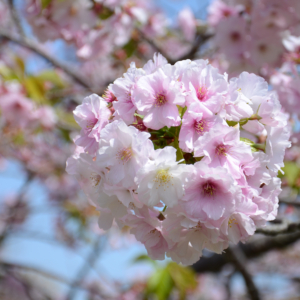Matsumae Castle is located in Matsumae Town, the southernmost part of Hokkaido, facing Aomori Prefecture across the Tsugaru Strait. In 2015, the new Hokkaido Shinkansen line will open, connecting Aomori to Shin-Hakodate. Although there is no Shinkansen station in Matsumae Town, the journey from Tokyo to Hakodate will become shorter. Matsumae is renowned for its cherry blossoms, not only in Hokkaido but throughout Japan. The best time to visit is in late April when over 10,000 cherry blossoms, including about 250 varieties of ‘Somei-yoshino,’ are in full bloom. ‘Somei-yoshino,’ Japan’s most popular cherry blossom, is particularly beautiful because the flowers bloom before the leaves emerge.
About Matsumae Fukuyama-jo
Taking five years to complete, Matsumae Fukuyama Castle was finished in September 1854 (Ansei 1), and it became the last Japanese castle built using traditional methods.
The completed castle covered an area of approximately 77,800 square meters and included a main keep (honmaru), second keep (ninomaru), third keep (sannomaru), six turrets, sixteen gates, and seven gun batteries.
Designated as a National Treasure in 1941 (Showa 16), the castle’s keep managed to survive the Boshin War, dismantling by the Hokkaido Development Commission, and the Pacific War. However, on the early morning of June 5, 1949 (Showa 24), the keep was destroyed by a fire that spread from the Matsumae Town Hall.
The current keep was reconstructed in 1961 (Showa 36) thanks to the earnest wishes of the townspeople and the goodwill of people from across the country.
Open
- April 10 – December 10
- 9:00 – 17:00
Access
- Take a JR train at Hakodate to Kikonai(木古内) and transfer a bus to Matsushiro(松城) and walk 10 minutes.
Admission Fee
- Adult: 360 yen
- Child: 240 yen
- 0139-42-2216
Inside Matsumae Castle park, there are more than 8,000 Somei-yoshino cherry trees. You can enjoy their blooms from late April to late May, starting with the early-blooming ‘Fuyuzakura’ (冬桜) and continuing to the late-blooming ‘Fukensho’ (普賢象). The oldest cherry tree, known as ‘Kechimyaku-Zakura’ (血脈桜) at Kozen-ji Temple (光善寺), is the most famous.
Surrounding the castle are several temples, including Kozen-ji (光善寺), Ryuun-in (龍雲院), Hougen-ji (法源寺), and Aun-ji (阿吽寺), all of which boast beautiful cherry blossoms in full bloom.
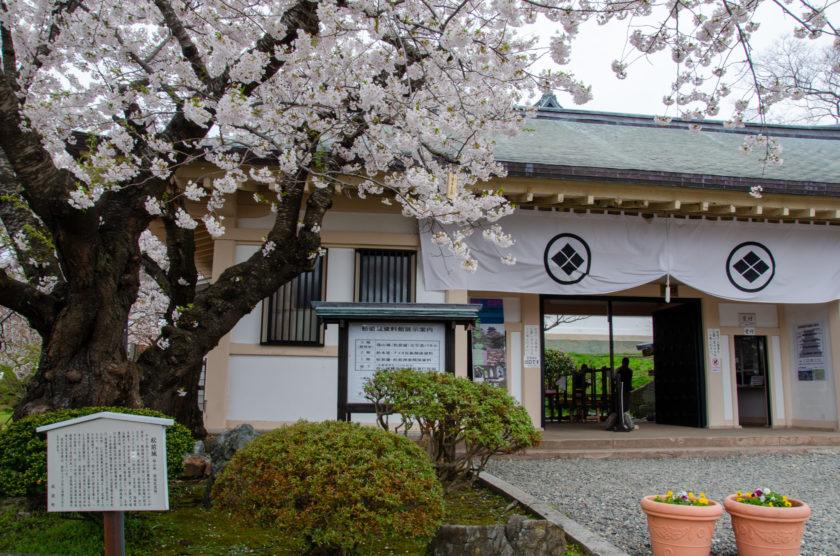
Inside the three-story castle is a museum showcasing numerous paintings, weapons, and armor. The exhibits also narrate the history of the fierce battles with the Ainu people, who had lived in the region long before the Wajin from Honshu arrived in the early Edo period.
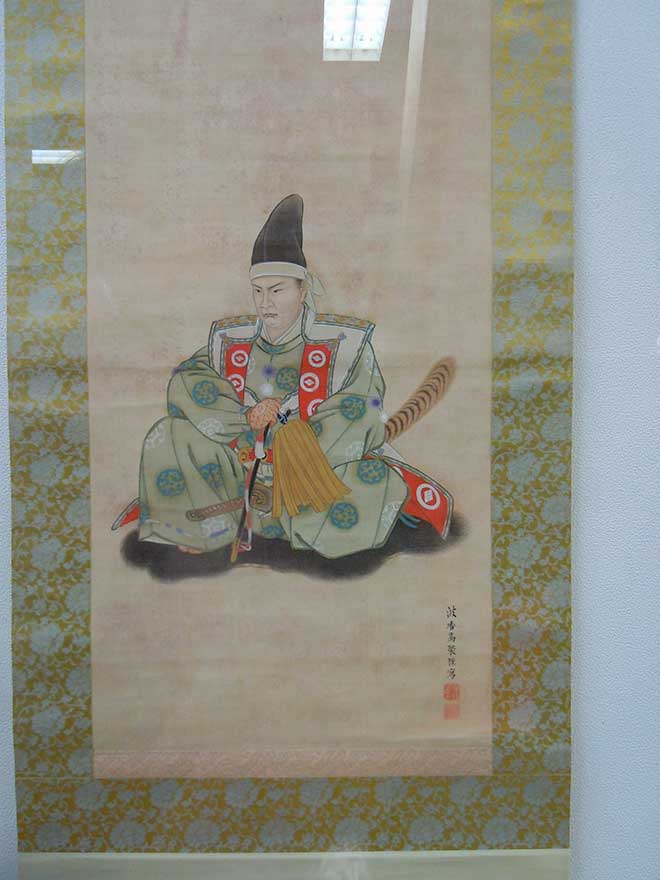
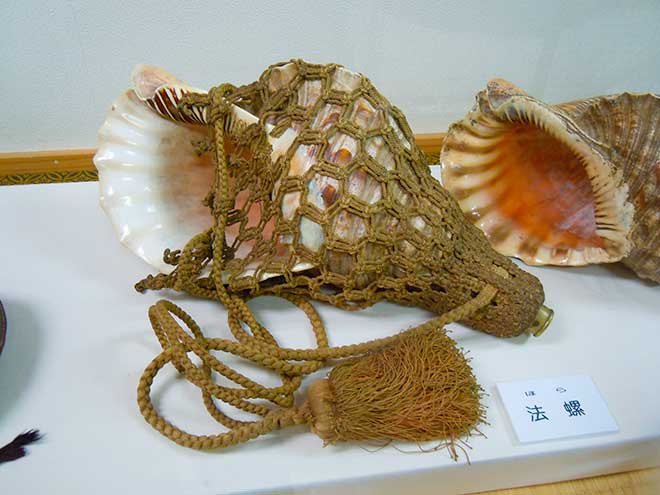
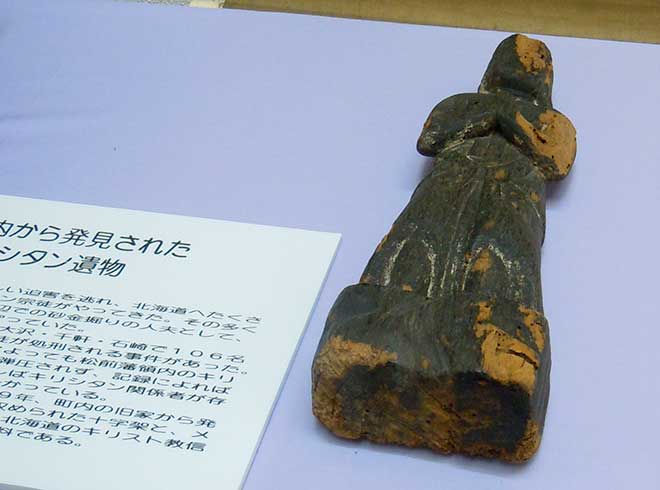
Another fascinating item is a figure of the Virgin Mary, discovered inside the castle. This serves as important evidence of the presence of Christians in such a northern region. According to studies of Japanese Christianity during the Edo period, many Christians fled to Matsumae from Honshu during the early Edo period, specifically during the reign of Tokugawa Iemitsu, the third shogun, in 1639. Shogun Iemitsu inherited the severe oppression of Christians from his predecessor, Toyotomi Hideyoshi. Under Iemitsu’s orders, 106 Christians were executed in Matsumae. The figure of the Virgin Mary stands as a poignant reminder of that tragedy.
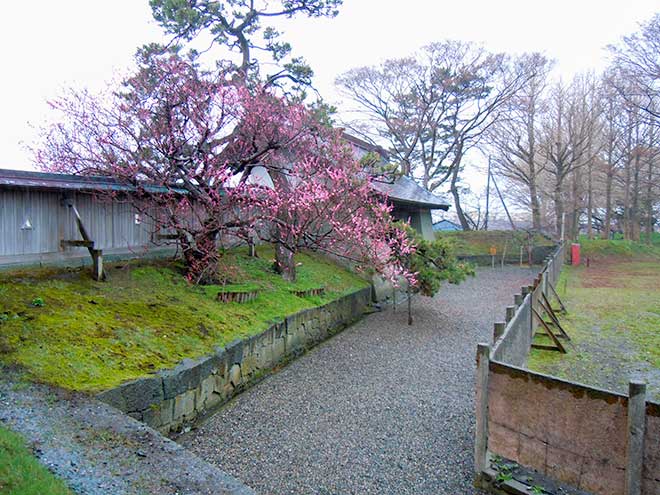
Outside the castle, you will see a large gate ahead. This is the main gate of Matsumae Castle, offering a view of Matsumae’s downtown below. It is an important vantage point for viewing the entire town. The gate survived the fires of war and is designated as a national important cultural asset. During the Boshin War (戊辰戦争) in 1868, the castle was occupied by the former Edo Shogunate army, led by Enomoto Takeaki and Hijikata Toshizo, along with the Shinsengumi, a Tokugawa Shogunate police and military force based in Kyoto dedicated to suppressing anti-Shogunate activities. Ironically, they occupied the Edo Shogunate castle to establish their own country through military force.
Ryuun-in Temple, built in 1628, miraculously survived the fires of the Boshin War and retains its original Edo period structure. It is designated as a national important cultural asset.
The main gate of Hougen-ji, built in the mid-Edo period, is the oldest building in Hokkaido. It also survived the fires of the Boshin War and is designated as a national important cultural asset.
